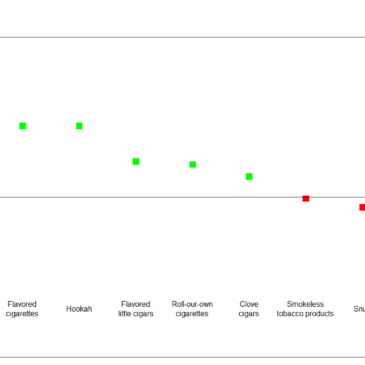Spouses can have both positive and negative effects on people’s efforts to quit smoking. For example, people who encourage and complement their spouse on their attempt to quit tend to increase their spouse’s likelihood of quitting, while people who try to police their spouse or nag about smoking tend to decrease their spouse’s likelihood of quitting. However, not as much is known about the effects spouses can have on attempts to quit alternative tobacco products. This is especially true for newly popularized forms, such as e-cigarettes and hookah. One factor to consider is spousal concordance – if both spouses use the same products or have the same hobbies. For example, if both spouses use e-cigarettes (that is, if there is spousal concordance), and only one has an interest in quitting, might that create stress or conflict in the relationship? This week’s ASHES reviews a study by Megan E. Roberts and colleagues that examined patterns of spousal concordance across several different alternative tobacco products.
What are the research questions?
Is spousal concordance higher for some alternative tobacco products than for others?
What did the researchers do?
Research staff approached potential participants in public areas in Columbus, OH and in the surrounding areas. Two hundred and seventy-eight individuals who spoke English, were married, and were 18 years of age or older completed the questionnaire. They reported whether they, and their spouses, had ever used a variety of alternative tobacco products (e.g., e-cigarettes, hookahs, cigars; see Figure 1 for the full list). For each of the eleven alternative tobacco products, the researchers calculated the phi coefficient to measure the concordance between participants’ use and their spouses’ use.
What did they find?
There was either no association, or a negative association, between the participants’ use and their spouses’ use of chewing tobacco, snus, cigars, and pipes. The association was strongest and positive for e-cigarettes, flavored e-cigarettes, flavored cigarettes, and hookah. For these products, if one spouse used, the other was likely to use.
 Figure. Phi coefficients for spousal concordance over eleven alternative tobacco products. Higher values indicate greater concordance and a stronger association between one spouse’s past use and the other’s. Adapted from Roberts et. al., (2016). Click image to enlarge.
Figure. Phi coefficients for spousal concordance over eleven alternative tobacco products. Higher values indicate greater concordance and a stronger association between one spouse’s past use and the other’s. Adapted from Roberts et. al., (2016). Click image to enlarge.
Why do these findings matter?
Participants who reported trying e-cigarettes were more likely to have spouses who had tried e-cigarettes than those who didn’t. The same went for other currently popular products such as flavored cigarettes and hookah. Couples where both spouses are trying to quit might have a built in “buddy system” that proves helpful. On the other hand, if only one spouse is interested in quitting, then the other might – possibly inadvertently – become an obstacle to success. Clinicians and counselors assisting those trying to quit these alternative products should consider the role the spouse might play in treatment and progress.
Every study has limitations. What about this one?
The questionnaire asked whether participants had ever used alternative tobacco products, as opposed to how often or how much, or if the use was recent or in the past. For example, one spouse could be a current user of e-cigarettes, while the other might have tried e-cigarettes once in the past but never again. The questionnaire data would suggest concordance (both have used e-cigarettes) where there is none in the present (only one spouse is a current user). Also, only one spouse filled out the questionnaire. Information about participants’ spouses may be only second-hand.
For more information:
The U.S. Department of Health & Human Services has information on the health effects of different tobacco products. For additional tools, please visit the BASIS Addiction Resources page.
— Matthew Tom
What do you think? Please use the comment link below to provide feedback on this article.




